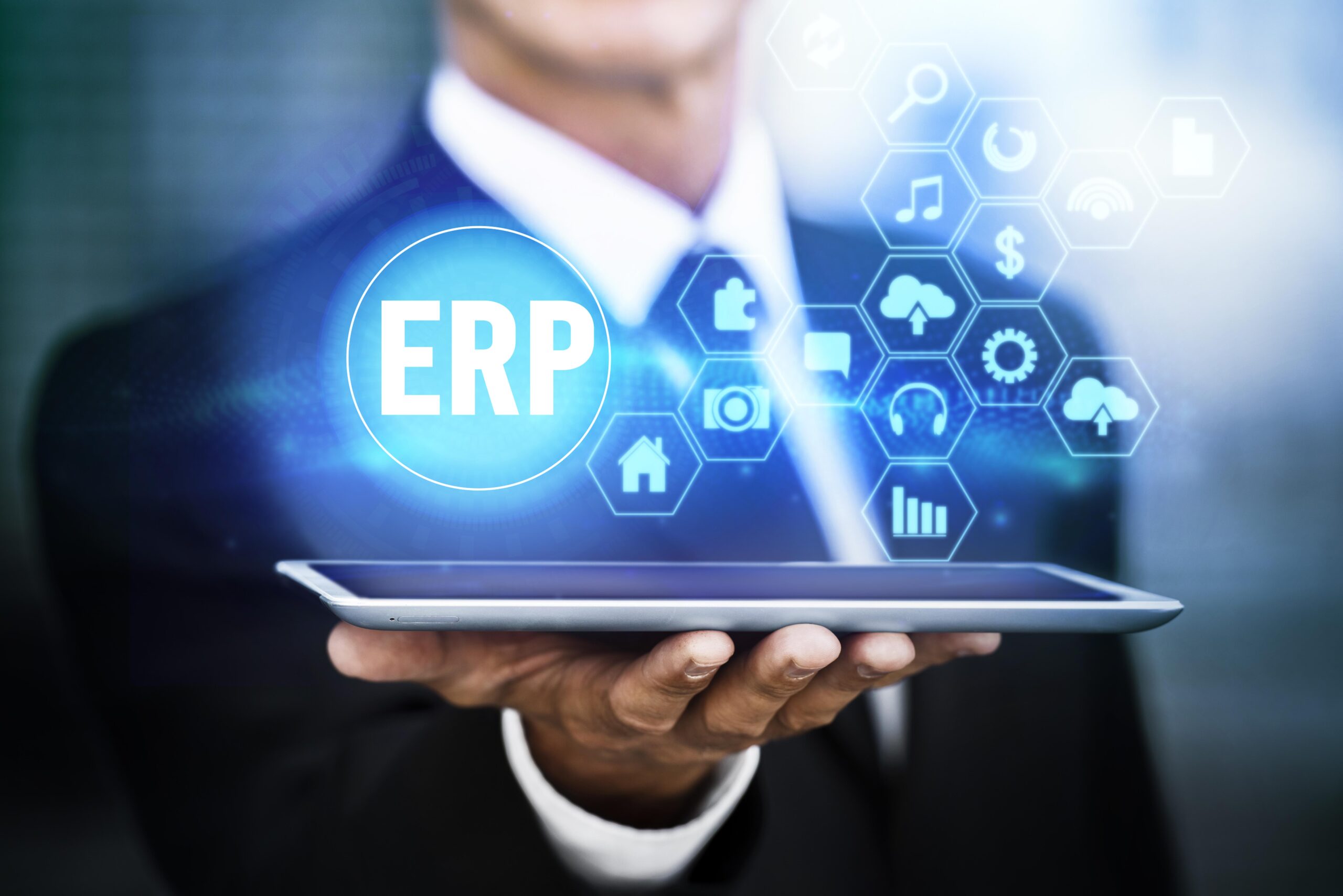In today’s dynamic business environment, companies are always on the lookout for new ways to improve productivity, simplify operations, and gain a competitive edge. Recently, Enterprise Resource Planning (ERP) systems have become widely used because of how effectively they integrate disparate corporate processes and services. To help businesses with their digital transformation, we will go deeply into the area of enterprise resource planning (ERP), discussing its definition, benefits, implementation, and best practices.
- Understanding Enterprise Resource Planning (ERP)
Enterprise Resource Planning (ERP) refers to a comprehensive software solution that integrates core business processes and functions, such as finance, human resources, supply chain management, inventory, procurement, manufacturing, and customer relationship management, into a unified system. By centralizing data and processes, ERP systems facilitate real-time information sharing and collaboration across different departments, enhancing operational efficiency and decision-making.
- Key Modules and Functionalities
ERP systems consist of several modules, each catering to specific business functions:
• Financial Management: Manages financial transactions, accounting, budgeting, and financial reporting.
• Human Resources: Handles employee data, payroll, benefits, attendance, and workforce planning.
• Supply Chain Management: Optimizes procurement, inventory management, order fulfillment, and supplier collaboration.
• Manufacturing: Streamlines production processes, scheduling, quality control, and product lifecycle management.
• Customer Relationship Management (CRM): Manages customer interactions, sales, marketing, and customer service.
• Business Intelligence (BI): Provides analytics, data visualization, and reporting tools for informed decision-making.
- Benefits of ERP Implementation
Implementing an ERP system offers a myriad of benefits to organizations:
• Improved Efficiency: Streamlines processes, reduces manual tasks, and minimizes data entry errors, leading to increased operational efficiency.
• Enhanced Data Accuracy: Centralizes data, ensuring consistency and accuracy across the organization, promoting reliable decision-making.
• Better Collaboration: Facilitates seamless communication and collaboration among departments, teams, and stakeholders.
• Cost Savings: Reduces operational costs by eliminating redundant tasks, optimizing inventory, and minimizing errors.
• Increased Productivity: Automates routine tasks, allowing employees to focus on strategic initiatives and value-added activities.
• Compliance and Reporting: Ensures compliance with regulatory requirements and provides robust reporting capabilities for audits and analysis.
- ERP Implementation Process
Implementing an ERP system is a complex and multifaceted process that involves several stages:
• Planning: Defines goals, scope, budget, and timeline for the ERP implementation project.
• Selection: Evaluates and selects an ERP vendor based on organizational requirements, scalability, and user-friendliness.
• Customization and Configuration: Tailors the ERP system to meet specific business needs, configuring modules, workflows, and user interfaces.
• Data Migration: Transfers existing data from legacy systems to the new ERP platform, ensuring data integrity and accuracy.
• Training: Provides comprehensive training to employees, ensuring they are proficient in using the ERP system effectively.
• Testing: Conducts rigorous testing, including user acceptance testing, to identify and resolve any issues before system deployment.
• Go-Live: Deploys the ERP system across the organization, making it operational for day-to-day activities.
• Post-Implementation Support: Offers ongoing support, maintenance, and updates to address issues, optimize performance, and ensure user satisfaction.
- Best Practices for Successful ERP Implementation
To ensure a successful ERP implementation, businesses should adhere to several best practices:
• Executive Support: Secures active support and commitment from top-level executives to drive the ERP implementation initiative.
• Clearly Defined Objectives: Establishes clear goals, KPIs, and expectations for the ERP system to align with the organization’s strategic vision.
• Cross-Functional Collaboration: Encourages collaboration and communication between different departments and stakeholders throughout the implementation process.
• Change Management: Implements change management strategies to address resistance, facilitate user adoption, and promote a positive organizational culture.
• Data Quality: Ensures data accuracy, consistency, and completeness, validating data before migration to prevent errors.
• Continuous Training: Provides ongoing training and support to employees, enabling them to maximize the use of the ERP system and stay updated with new features.
• Regular Updates and Optimization: Stays current with software updates, patches, and new releases, optimizing the ERP system to meet evolving business requirements.
- Trends and Innovations in ERP
As technology advances, ERP systems are evolving to incorporate innovative features:
• Cloud-Based ERP: Cloud-based ERP solutions offer scalability, accessibility, and cost-effectiveness, allowing businesses to leverage ERP capabilities without significant upfront investments.
• Mobile ERP: Mobile ERP applications enable users to access real-time data, approve workflows, and make decisions on the go, enhancing flexibility and productivity.
• AI and Machine Learning: Integration of AI and machine learning technologies in ERP systems enables predictive analytics, automation, and intelligent decision-making.
• IoT Integration: ERP systems are integrating with the Internet of Things (IoT) devices, enabling real-time monitoring of equipment, supply chain, and inventory for proactive maintenance and optimization.
• Blockchain: Blockchain technology enhances data security and traceability, ensuring the integrity of transactions and supply chain processes within ERP systems.
Enterprise Resource Planning (ERP) systems serve as the backbone of modern businesses, empowering organizations to optimize operations, enhance collaboration, and make data-driven decisions. By understanding the key modules, benefits, implementation process, and best practices, businesses can leverage ERP solutions to streamline processes, reduce costs, and gain a competitive advantage in the digital landscape.
As ERP systems continue to evolve with emerging technologies, businesses should remain agile, embracing innovations that enhance efficiency, provide valuable insights, and foster growth. With a well-implemented and effectively managed ERP system, organizations can navigate the complexities of the modern business environment with confidence, driving success and sustainability in the long run.

